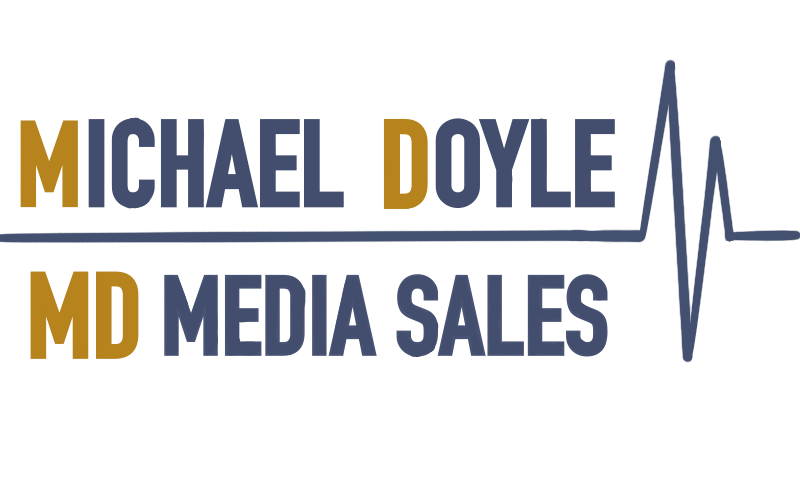Anchors Aweigh. You can be a better negotiator
Many people hate negotiation. Salespeople, who almost always negotiate in their jobs have little training in how to negotiate. I’ve actually heard salespeople tell me that they were not ‘born to negotiate.’ That negotiation was not in the DNA.
Bulls**t.
In my work experience in media, one of the challenges has been that sellers are not paid based upon the price of the product, only in the size of the order. Their first thought is to give in on the price of the product, often too early, often too much. They forget that the price of the product in media advertising will determine the total order size and the size of their commission check.
This leads companies to want to pay commissions based upon the price of the product sold. A higher price, a higher commission. The challenge with that is what Economists Amos Tversky and Daniel Kahneman called “loss aversion.” We fear losing the sale more than most gains in commission will provide. Yes, there is a point in incentives where you can pay someone enough of a bump that they will overcome the loss aversion, but for most companies, the incentive to raise the price is too high.
No commission incentive will work if sellers don’t have confidence in their ability to negotiate.
Negotiation is not a talent you are born with it’s a skill you can develop. Customers and prospects will negotiate the price of a product as a matter of course. You need to expect it, prepare for it, and get good at it. Over the next few weeks, I will share a few tips on how to be better at negotiation.
First Negotiation Challenge: Anchoring.
The anchoring bias is inherent in all of us, and is used by salespeople all the time. Why do you think a car salesperson starts with the “sticker price?” No one pays the sticker price, I hope. By getting your mind to the sticker price as the starting point, and showing you a discount off the sticker, the salesperson makes you see the offered price as a discount. You’re negotiating down off the highest price possible. Instead, perhaps you should start with your own low number and make the car dealer negotiate up.
Unfortunately, too many salespeople outside the auto industry don’t understand anchoring. It is used against sellers all the time. When a salesperson asks what’s important to a buyer, the first thing is always some form of price. In media, this comes as Cost per thousand gross impressions (CPM) or Cost per rating point (CPP). Buyers request lower and lower CPP or CPM targets because it works to define the price dialogue. Media salespeople start trying to negotiate UP from a imaginary low target, instead of setting their price anchor high and negotiating down.
Understand the anchoring bias, and you fully understand why this is important.
It’s true in almost all industries. The prospect is always telling the seller that the competitor has a lower price, or better terms. They are pushing the seller to fear losing the sale. They anchor your mind to a low target or an imaginary low target price, and the bias in your mind, your loss aversion bias make you want to drop your price.
Three tips to counter the anchoring bias:
1. Set your anchor high as a seller. Ask the prospect early in the sales process (during your discover meeting), “What’s important to you when deciding on which product to select?” Obviously you will put this in the language of your business. When the prospects says “Price,” (and they will), you should immediately respond, “Well that might be a problem for me. You see, we are rarely the lowest price. Why do you think that is?”
Whatever they say back, you accept. If they say, “Well, you’ve got the highest quality,” you respond, “that’s it.” Ask the question, accept their answer.
2. Shift the conversation off of price by asking “Assuming that everyone came back at the same price, what other criteria would you use to make your decision?”
Then write down whatever your prospect says.
These are the critical factors that will matter to this customer. These are the areas of differentiation you must make - how your product needs to deliver. Anyone can lower their price. Can you deliver on these other needs? Focus your discovery on these real buying criteria. Price is important, but it’s rarely the most important. Find out what’s really important by asking this question.
3. Have the courage to walk away. By having more prospects in the funnel, you have the ability to reject the prospect’s silly price demands, and move on. More often than not, the prospect is pushing you to discount. The key is whether you discovered other needs they have that are not based upon price.
After all, rarely does your prospect drive the cheapest car on the market. They bought a car for a lot of reasons other than price. They’ll buy your product for reasons other than price, if you find out what they are, and sell those reasons to them.
A great short video on understanding the Anchoring Bias was created by Yale Professor Laurie Santos can be found here.
Your brain is causing you to leave money on the table. Understand how it works, prepare to overcome the anchor effect, and make more money.

